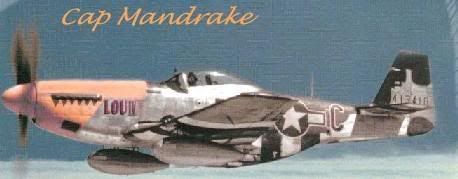Cap Mandrake
Posts: 23184
Joined: 11/15/2002
From: Southern California
Status: offline

|
I didn't know this:
After the RAF, the RCAF was the next biggest user of the PBYS, operating thirteen squadrons; five on the Canadian west coast, six on the east coast and two overseas. In the RCAF, the Catalinas first went into service in Eastern Air Command with No. 116 Squadron at Dartmouth on 28 June 1941. These first aircraft were ten Catalina Mk. Is diverted from an RAF contract to fulfil a request from the AOC, A/C A. E. Godfrey, to obtain long range aircraft to equip the anti-submarine squadrons. The Digbys, Bolingbrokes, Hudsons and Stranraers had insufficient range to cope with the marauding U-boats, and the Catalinas were the first really long-range aircraft to be used by the EAC. Overseas, the first Catalina squadron was No. 413, formed 1 July 1941 and later moved to Ceylon.
Later Catalinas ordered by the RCAF and built to RCAF specifications were called Cansos. At first the aircraft were supplied from Consolidated-Vultee through RAF contracts and Canadian orders. Besides the Catalinas mentioned earlier, another eight were obtained from an RAF order in 1942 and another 12 with modified armament were delivered to fill an RCAF order in early 1942. At the start of 1942, the RCAF had only 32 of these aircraft on strength. However, later in the year the Air Force began receiving Canadian built Cansos to replace the aging Stranraers in Western Air Command and to form new squadrons in Eastern Air Command. The two squadrons overseas were supplied by the RAF.
During early 1941, under an agreement between the U. S. and Canadian governments, Canadian Vickers Ltd., at Cartierville, Que., and Boeing Aircraft of Canada, at Vancouver, B C, began production of the PBY-5 and PBY-5A. During early 1942 Canadian Vickers began delivery of its first batch of Canso flying boats for the RCAF. However the first 36 aircraft were to go to the RAF,as Catalina IIAs to replace Catalinas the RCAF had received earlier from RAF contracts. Of these 36 aircraft, only 29 were actually delivered, the rest going to the RCAF. The first PBY-5A Canso A was completed on 3 April 1943. When production ceased on 19 May 1945, Canadian Vickers had built 369 aircraft of this type. The RCAF received 139 aircraft from Vickers and the USAAF took delivery of 230, designated GA-10A. Of these, 183 were to have gone to the U. S. Navy as the PBY-IA, but none were delivered to that service. In the USAAF the OA-10A was used mostly for search-and-rescue, although some saw service in North Africa as bombers.
At Vancouver, the Boeing plant on Sea Island produced 240 Catalinas designated PB2B-1, entirely for Lend-Lease. Of these, 193 went to the RAF as Catalina Mk. IVBS, 41 to the RNZAF and 6 to the RAAF, the first of these having flown on 12 May 1943. Later the company produced the PB2B-2 (based on the Naval Aircraft Factory's PBN-1 Nomad), of which 50 were built and supplied to the RAF as the Catalina Mk. VI. Also produced by Boeing were 17 flying boat and 55 amphibious Cansos for the RCAF to bring total production to 362 aircraft. During the peak of production, the two plants were producing 50 aircraft per month. Canadian Vickers also produced 119 hulls and 172 wing centre-sections for the Coisolidated-Vultee plant in New Orleans.
In Canada a total of 254 Catalinas and Cansos were used by RCAF units in the Home War Establishment. They served in both EAC and WAC and one squadron operated overseas for about a year-and-a-half from bases in Iceland and Scotland.

http://www.rcaf.com/archives/archives_aircraft/canso_catalina/index.php
|
 Printable Version
Printable Version













 ) have been taking some kind of vitamin supplement as they are attacking very aggresively. Five carriers and 4 or 5 BB's in the South China Sea, 2 or 3 carriers sneaking by Rossel Is (Coral Sea). Bombers pounding Koepang and Palembang every time the clouds clear. Its like a war zone, I tell you, a war zone. I will post some when I get home.
) have been taking some kind of vitamin supplement as they are attacking very aggresively. Five carriers and 4 or 5 BB's in the South China Sea, 2 or 3 carriers sneaking by Rossel Is (Coral Sea). Bombers pounding Koepang and Palembang every time the clouds clear. Its like a war zone, I tell you, a war zone. I will post some when I get home. 
























 New Messages
New Messages No New Messages
No New Messages Hot Topic w/ New Messages
Hot Topic w/ New Messages Hot Topic w/o New Messages
Hot Topic w/o New Messages Locked w/ New Messages
Locked w/ New Messages Locked w/o New Messages
Locked w/o New Messages Post New Thread
Post New Thread